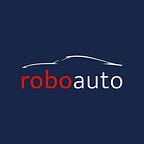Control Panel Application Development
Autonomous car equipped with six cameras, multiple sensors — plenty of input data. How to visualize them to a car’s user? By creating a dashboard application!
Since our car is equipped with cameras and sensors that make autonomous driving possible, we can further use the captured data and display them on an output device inside the car. For this purpose, a monitor fixed to the dashboard was a suitable choice. We set a task to create an application that would provide functions would be helpful to its user — such as:
- aforementioned displaying of a route with detected lanes, cars and surroundings
- GPS navigation
- start-stop button for launching autonomous driving
- steering wheel rotation demonstration
- possibility to set a maximum speed
Among other functions, that are appreciated rather by car enthusiasts (such as we are) than by ordinary drivers, belong:
- visualization of 3D LiDAR,
- displaying a view from the six cameras fixed to the rack on the roof of our car.
This application is a successor of an older one which runs on Android. We started developing the new one in Qt 3D studio 2.1. First, we created a presentation of a visual layout as a preview of what the app might look like. By doing so, we found out that this framework was not ideal, because its interface was simply insufficient for us. We decided to write the application using QML in the Qt framework. Qt is generally suitable for development of applications with a graphical interface and besides, we are quite experienced in it — that’s why we chose it. Once we knew which framework to use for writing the application and what functions it will have, the realization was a piece of cake. When writing the application, we had to decide whether the screen would be fixed in a portrait (vertical) or a landscape (horizontal) position. The landscape one won — visualization and other features fit better in this display format. Some of the most challenging actions involved in the development of the app included 3D car models loading, connecting the dashboard to the other parts of the system, adding menu statuses, sensors visualization etc.
The next highly important step was selecting the right monitor which would meet our requirements. We decided to buy HFSECURITY 13,3-inch IPS touch monitor for its great display possibilities, multitouch technology and a matt display which does not dazzle the driver as a glossy one might.
In the pictures above, you can see the new design of the graphical interface of the app (from buttons and icons to the complete interface) — it makes the app look cooler and classier. The only things that remain to be done are to improve scene lighting and load a new 3D car model. Now, let’s have a look at what the current appearance of the dashboard app is and how it works in practise:
Roboauto has recently launched a new Facebook page, so follow not only our blog but also our Twitter or Facebook pages to have the most recent information directly from the members of our team!
FB page: https://www.facebook.com/roboautoCZ
